What’s in a Pocket? The Five-Pocket Evolution of Jeans
Denim designers know better than to mess with perfection. Though they might break new ground with fabrics and cuts, the essential design of the five-pocket jean (particularly the men’s version) is essentially sacred ground.
Denim designers know better than to mess with perfection. Though they might break new ground with fabrics and cuts, the essential design of the five-pocket jean (particularly the men’s version) is essentially sacred ground. For jeansmakers, the classic five-pocket design has remained virtually unchanged for more than a century. At the core of the five-pocket design are the pockets themselves—a design feature so ubiquitous that it is easy to take them for granted. Pockets began more than 5,000 years ago as pouches worn on the outside of our clothes. The perfectly preserved frozen remains of Otzi, dug up in the Alps in 1991, gave researchers a frozen-in-time look at what men might have worn around 3,300 BCE. Otzi’s clothes included a pouch fastened to his belt. The pouch, containing a scraper, drill, flint flake, bone awl, and a bit of dried fungus, is our oldest preserved example of what we might call a pocket.
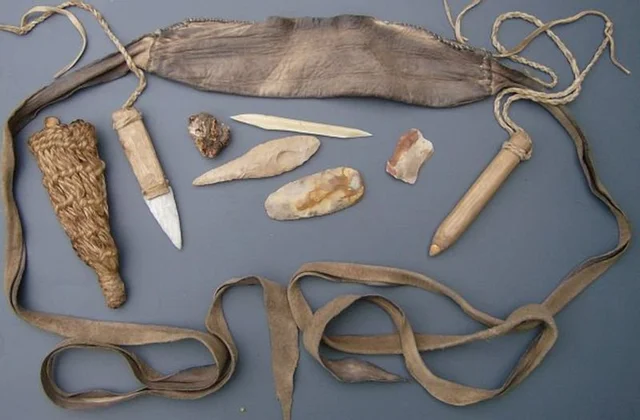
**Otzi’s Belt and Pouch** The first step towards a more modern version of the pocket came with rising crime in the Middle Ages. The pouch, which often contained valuables, was an easy target for thieves, so men and women started wearing their pouches inside of their clothes. Slits were added in men’s trousers and women’s dresses so that the pouch could be accessed. It wasn’t until the seventeenth century that a tailor had the bright idea to turn the slits into pockets. Garment designers began adding pockets into men’s jackets, waistcoats, and breeches. Women’s pockets gradually transformed into the purse—indeed, women are still fighting for a well-deserved pocket equality. Men’s pockets, on the other hand, proliferated, appearing just about everywhere a man might have use for one.

**Late-18th Century French Pocket** This brings us to the middle of the nineteenth century, when denim trousers became a popular form of workwear. In San Francisco, dry goods salesman Levi Strauss and tailor Jacob Davis joined forces to create what was then the most durable pants available for working men. Key to their appeal was their rivet-reinforced pockets, which allowed miners, foresters, and teamsters to carry their tools and other sundries without worrying about the pockets tearing at the corners. The first jeans produced by Strauss and Davis did not have five pockets, they had four of them (and not the four that you might think). There were the two hip pockets in front, one pocket on the back (on the right hand side), and the coin pocket. Often called the fifth pocket, the coin pocket was probably another of Jacob Davis’s workwear innovations. Before Davis, the coin pocket had appeared on men’s trousers, but Davis was probably the first to introduce it to denim workwear. Other San Francisco brands were soon including the small pocket in their designs.

**A pair of Levi’s from the 1880s complete with arcuates** Its placement was not fixed for quite a while. In the earliest pairs in the Levi Strauss archives, the opening of the coin pocket was in the middle of the waistband. San Francisco competitors like Boss of the Road and Champion Coveralls placed their coin pockets below the waistband, giving them rounded openings and, in some cases, making them quite large (large enough to merit their own pocket bags). Strauss and Co. moved their coin pockets below the waistband around the end of the century. While some of these competitors offered five-pocket versions of their jeans, Levi Strauss wouldn’t add a fifth pocket (the second pocket on the left side of the seat) until 1901. Since the strength of the pockets was a key point of differentiation for Levi’s, they made the pocket bags out of the same sturdy material used in the rest of the overalls (either denim or duck canvas). Perhaps inspired by some of their San Francisco-based workwear competitors, Strauss switched to a softer fabric sometime around the turn of the twentieth century. Customers probably wanted something that balanced durability and comfort—something equally suited to hard tools and soft hands. The shape of both the front and the back pockets were the result of some tinkering. The 1873 patent shows hip pockets with diagonal rather than vertical openings. By the time the jeans went into production, though, the front pockets had been given their familiar curved shape. While some workwear brands experimented with unique front pocket shapes, each of them with their own way of reinforcing the opening with either extra rows of stitching or leather patches, nearly all of these unique styles were discarded when the riveted reinforcements were no longer protected by the Levi’s patent.
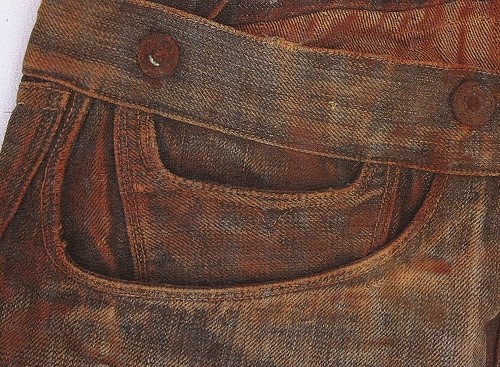
**Neustadter Brothers coin pocket detail** On the back pockets, the evolution was more subtle. Even the earliest models of Levi’s had something resembling the familiar pentagonal shape, with a slight taper down towards the pointed bottom end of the pocket. The pockets were wider, and they sat closer to the outside of the hips, but the die was cast. Competing brands largely used an identical design, which may mean that the pocket shape was in widespread use before the 1870s. When Wrangler and Lee began seeking ways to distinguish themselves from their chief denim rival, they did so first and foremost with their back pocket design. There are other key differences between the three brands, but, even with the visible branding removed, the three brands can be easily told apart by looking at the back pockets, which started to look dramatically different in the 1940s.
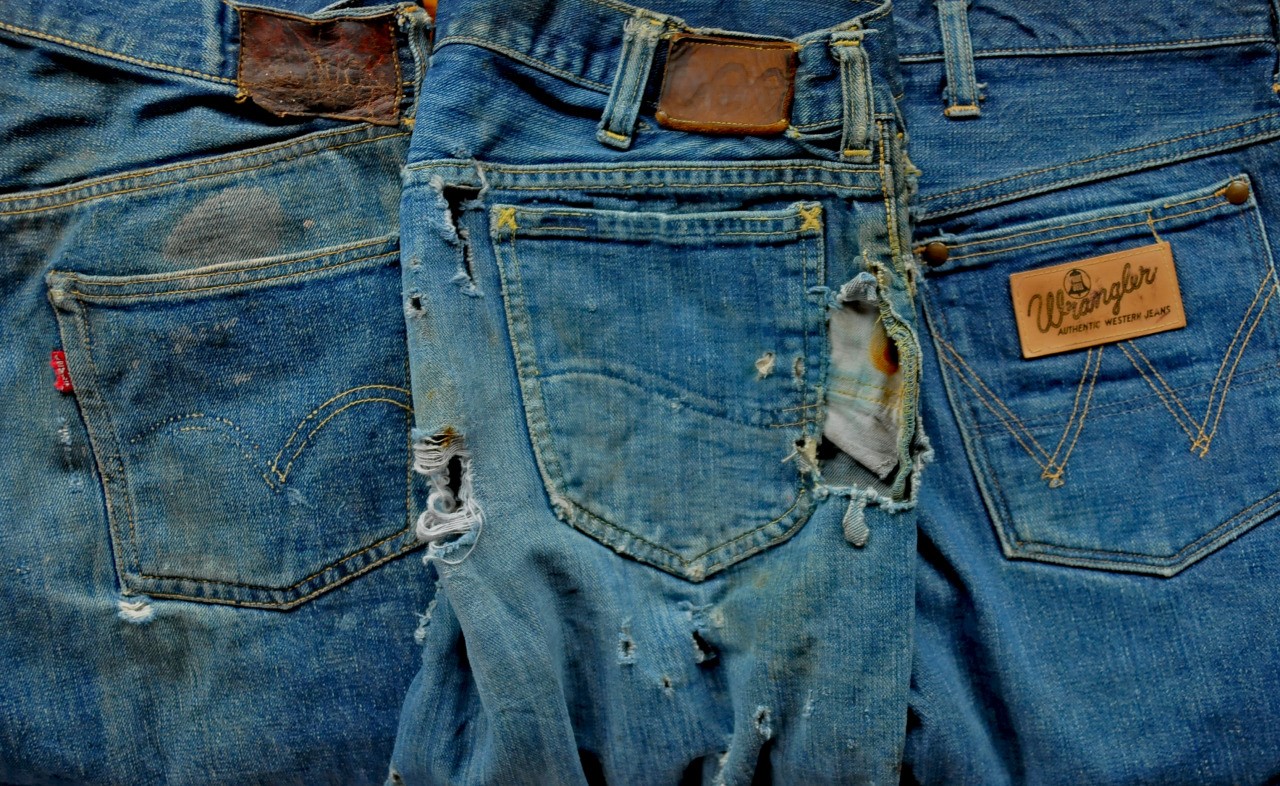
**1940s Levi’s, 1950s Lee, and 1950s Wranglers** Levi’s forced this change when they trademarked their gull-shaped arcuates in 1943. The shape had become synonymous with blue jeans, and its use was widespread among workwear manufacturers in the first half of the twentieth century. H.D. Lee’s jeans looked virtually identical to Levi’s 501s until the ‘30s, when they began using the x-shaped bar tacks instead of rivets to reinforce the back pockets. They followed this up in 1946, when they introduced their now-iconic spade-shaped back pockets graced with the Lazy S arcuates. Wrangler, founded in 1947 as an offshoot of Blue Bell, debuted an entirely new back pocket with their 11MW jeans. Designed with the assistance of legendary Philadelphia tailor Rodeo Ben, the new jeans aimed at cowboys featured a flat scratch-proof rivets, striking W-shaped arcuates, and a small leather patch on the upper half of the pocket. The gambit worked, and Wrangler’s jeans became the most popular brand in the rodeo circuit. By the middle of the century, the iconic pocket designs had been established. While brands still use arcuates, rivet placement, and pocket shape to distinguish themselves in a crowded denim market, very few break entirely free of the mould. As they say, if it ain’t broke don’t fix it. If the pocket isn’t ripped, don’t mend it.
Cepte Neler Var? Jeanlerin Beş Cepli Evrimi
Denim tasarımcıları mükemmelliğe bulaşmamaları gerektiğinin farkındadır. Kumaşlar ve kesimlerle çığır açsalar da beş cepli jean'in özellikle erkek versiyonunun ana tasarımı kutsal kabul edilir. Jean üreticileri için klasik beş cepli tasarım, yüzyılı aşkın bir süredir neredeyse hiç değişmemiştir. Beş cepli tasarımın özü ceplerin ta kendisidir; bu tasarım özelliği o kadar yaygındır ki değeri yeterince bilinmez. Cepler, 5.000 yıldan daha uzun bir süre önce kıyafetlerimizin dışına giyilen keselerdi. Otzi'nin 1991'de Alpler'de bulunan mükemmel bir şekilde korunmuş donmuş kalıntıları sayesinde araştırmacılar, erkeklerin MÖ 3300 civarında giydikleri giysileri zamanda yolculuk etmişçesine yakından inceleme fırsatı yakaladılar. Otzi'nin kıyafetleri arasında kemerine bağlı bir kese vardı. İçinde bir kazıyıcı, matkap, çakmak taşı, kemikten yapılmış bir tığ ve biraz kuru mantar olan bu kese, cep diyebileceğimiz şeyin günümüzde bilinen en eski örneğiydi.

**Otzi’nin Kemeri ve Kesesi** Cebin daha modern bir çeşidine ilk adım, Orta Çağ'da suçların arttığı bir dönemde atıldı. Genellikle içinde değerli şeyler bulunan kese hırsızlar için açık hedefti, bu yüzden erkekler de kadınlar da keselerini kıyafetlerinin içinde taşımaya başladılar. Erkek pantolonlarına ve kadın elbiselerine keseye ulaşılabilmesi için yırtmaçlar eklendi. 17. yüzyılda bir terzi bu yırtmaçları cebe çevirmek gibi dahice bir fikir buldu. Sonrasında giysi tasarımcıları erkek ceketlerine, yeleklerine ve pantolonlarına cep eklemeye başladı. Kadınların cepleri ise yerini yavaş yavaş çantaya bıraktı. Günümüzde kadınlar hala erkeklerinki gibi cepleri olmamasından muzdaripler. Öte yandan, erkeklerin cepleri çoğaldı ve bir erkeğin kullanabileceği hemen her yerde cep bulunmaya başladı.
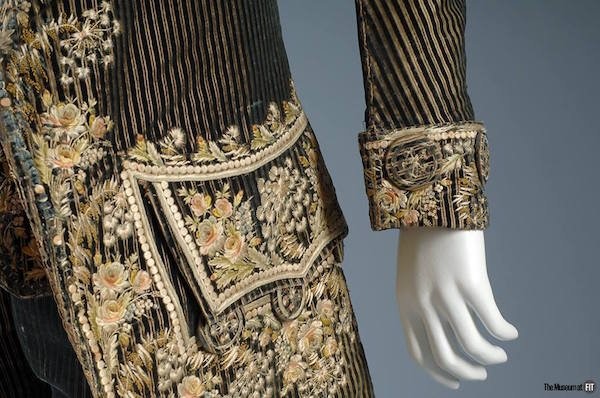
**18. Yüzyılın Sonlarında Fransız Cep** Bu bizi, denim pantolonların popüler bir iş kıyafeti haline geldiği on dokuzuncu yüzyılın ortalarına kadar getiriyor. O zamanlarda San Francisco'da yaşayan manifaturacı Levi Strauss ve terzi Jacob Davis, erkek işçilerin kullanacağı en dayanıklı pantolonu yaratmak için güçlerini birleştirdi. Bu pantolonların cezbeden özelliği ise perçinle güçlendirilmiş ceplerdi. Madenciler, ormancılar ve kamyoncular, yırtılmasından korkmadan aletlerini ve diğer çeşitli eşyalarını bu ceplerde taşıyabiliyordu. Strauss ve Davis tarafından üretilen ilk jeanlerin beş değil dört cebi vardı. Fakat bu dört cep sizin tahmin ettiğiniz dörtlü değildi. Ön tarafta iki tane şimdiki arka ceplerden, arkada sağda bir cep ve bir de bozuk para cebi bulunuyordu. Genellikle beşinci cep olarak adlandırılan bozuk para cebi muhtemelen Jacob Davis'in iş kıyafeti yeniliklerinden bir diğeriydi. Davis'ten önce de erkek pantolonlarında bozuk para cebi vardı ancak onu denim iş kıyafetleriyle ilk tanıştıran muhtemelen Davis oldu. Sonrasında diğer San Francisco markaları da tasarımlarına küçük birer cep eklediler.
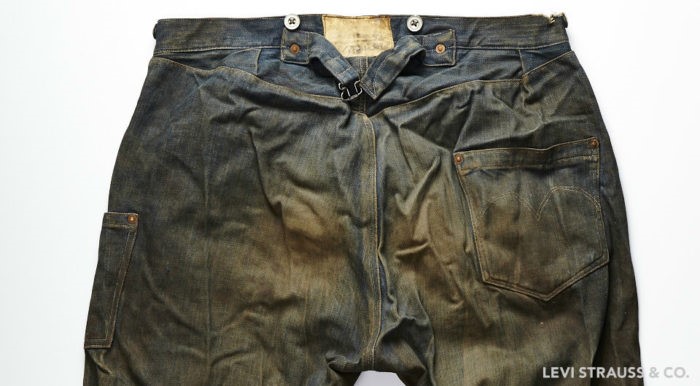
**1880'lerden kavisli bir çift Levi's** Cebin nerede olacağına bir süre karar verilemedi. Levi Strauss arşivlerindeki en eski çiftlerde, bozuk para cebinin ağzı kemer kısmının ortasındaydı. Boss of the Road ve Champion Coveralls gibi San Francisco markaları, bozuk para ceplerini kemer kısmının altına yerleştirerek yuvarlak cep ağzı oluşturdu ve onları bazı durumlarda cep çantası denilebilecek kadar büyük hale getirdi. Strauss and Co. yüzyılın sonlarında bozuk para ceplerini kemer kısmının altına yerleştirdi. Bu markalardan bazıları jeanlerinin beş cepli versiyonlarını sunarken Levi Strauss 1901'e kadar arka tarafta solda bulunan beşinci cebi eklemedi. Ceplerin sağlamlığı Levi's için önemli bir imza olduğundan cep çantalarını tulumların geri kalanında kullanılan sağlam malzemeden, denim veya branda bezinden yaptılar. Belki de rakibi olan San Francisco merkezli iş kıyafeti markalarının bazılarından ilham alan Strauss, yirminci yüzyılın başlarında daha yumuşak bir kumaşa geçti. Müşteriler muhtemelen dayanıklılık ve konforu dengeleyen, hem sert aletlere hem de narin ellere uygun bir kıyafet istediler. Üstüne düşünüldükten sonra ön ve arka ceplerin şekilleri oluşturuldu. 1873 patentinde arka cepler dikey değil diyagonal ağza sahipti. Ancak jeanler üretime girdiğinde ön ceplere bilindik kavisli şekiller verilmişti. Bazı iş kıyafeti markaları, ekstra dikiş sıraları veya deri yamalarla cebi güçlendirmek gibi benzersiz ön cep şekillerini denemiş olsa da bu benzersiz stillerin neredeyse tamamı, perçinli takviyeler artık Levi's patenti tarafından uygulanmadığından elden çıkarıldı.

**Neustadter Brothers bozuk para cebi detayı** Arka ceplerde, bu evrim daha zor fark edilmekteydi. Levi's'in en eski modellerinde bile arka cep, alt ucuna doğru hafif bir daralma ile bilindik beşgen şekle benzemekteydi. Fakat cepler daha genişti ve kalçanın dış kısmına konumlandırılmışlardı. Ancak ok yaydan çıkmıştı bir kere. Rakip markalar büyük ölçüde aynı tasarımı kullandılar, bu da bu cep şeklinin 1870'lerden önce yaygın olarak kullanıldığı anlamına gelmekteydi. Wrangler ve Lee, kendilerini baş denim rakiplerinden ayırmanın yollarını aramaya başladıklarında, bunu her şeyden önce arka cep tasarımlarıyla yaptılar. Üç marka arasında başka önemli farklar da bulunmakta ancak 1940'larda görünür markalama kaldırılmış olsa bile çarpıcı bir şekilde farklı görünmeye başlayan arka ceplere bakılarak üç marka kolayca ayırt edilebilirdi.

**1940'lar Levi’s, 1950'ler Lee, ve 1950'ler Wranglers** Levi's, 1943'te martı şeklindeki kavislerini markalaştırarak bir değişikli gitti. Bu şekil, blue jeans ile eş anlamlı hale gelmişti ve yirminci yüzyılın ilk yarısında iş kıyafeti üreticileri arasında kullanımı yaygınlaştı. H.D. Lee'nin jeanleri, arka cepleri güçlendirmek için perçinler yerine x şeklindeki punterizleri kullanmaya başladıkları 30'lu yıllara kadar Levi's 501'lerinkiyle neredeyse aynı görünüyordu. Bu değişikliği izleyen 1946'da, Lazy S kavisleriyle süslenmiş ikonikleşmiş, maça şeklindeki arka ceplerdi. 1947'de Blue Bell'in bir dalı olarak kurulan Wrangler, 11MW jeanleriyle piyasaya tamamen yeni bir arka cep tasarımı sürdü. Efsanevi Philadelphia terzisi Rodeo Ben'in yardımıyla tasarlanan kovboyları hedefleyen yeni jeanler, düz ve çizilmez perçinlere, çarpıcı W şeklinde kavislere ve cebin üst yarısında bulunan küçük bir deri yamaya sahipti. Bu numara işe yaradı ve Wrangler'ın jeanleri rodeo devresindeki en popüler marka haline geldi. Yüzyılın ortalarında ikonik cep tasarımları ortaya çıktı. Markalar kalabalık bir denim pazarında farklılık yaratmak için hala kavisli, perçin ve cep şeklini kullanırken, çok azı kalıpların dışına çıkmakta. Dedikleri gibi, çalışıyorsa kurcalama. Cep yırtık değilse, onarma.
To view full content and a better mobile experience, try



